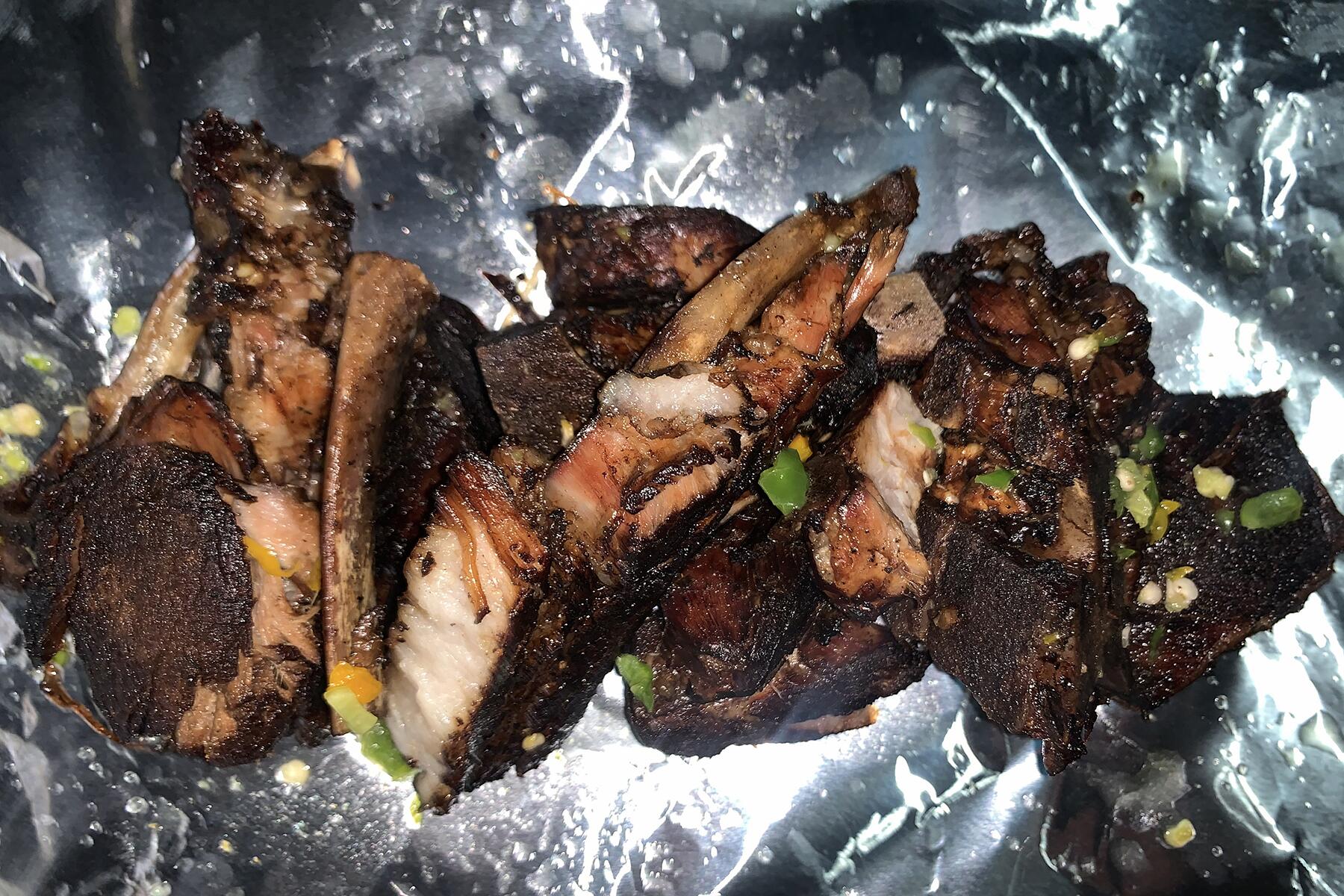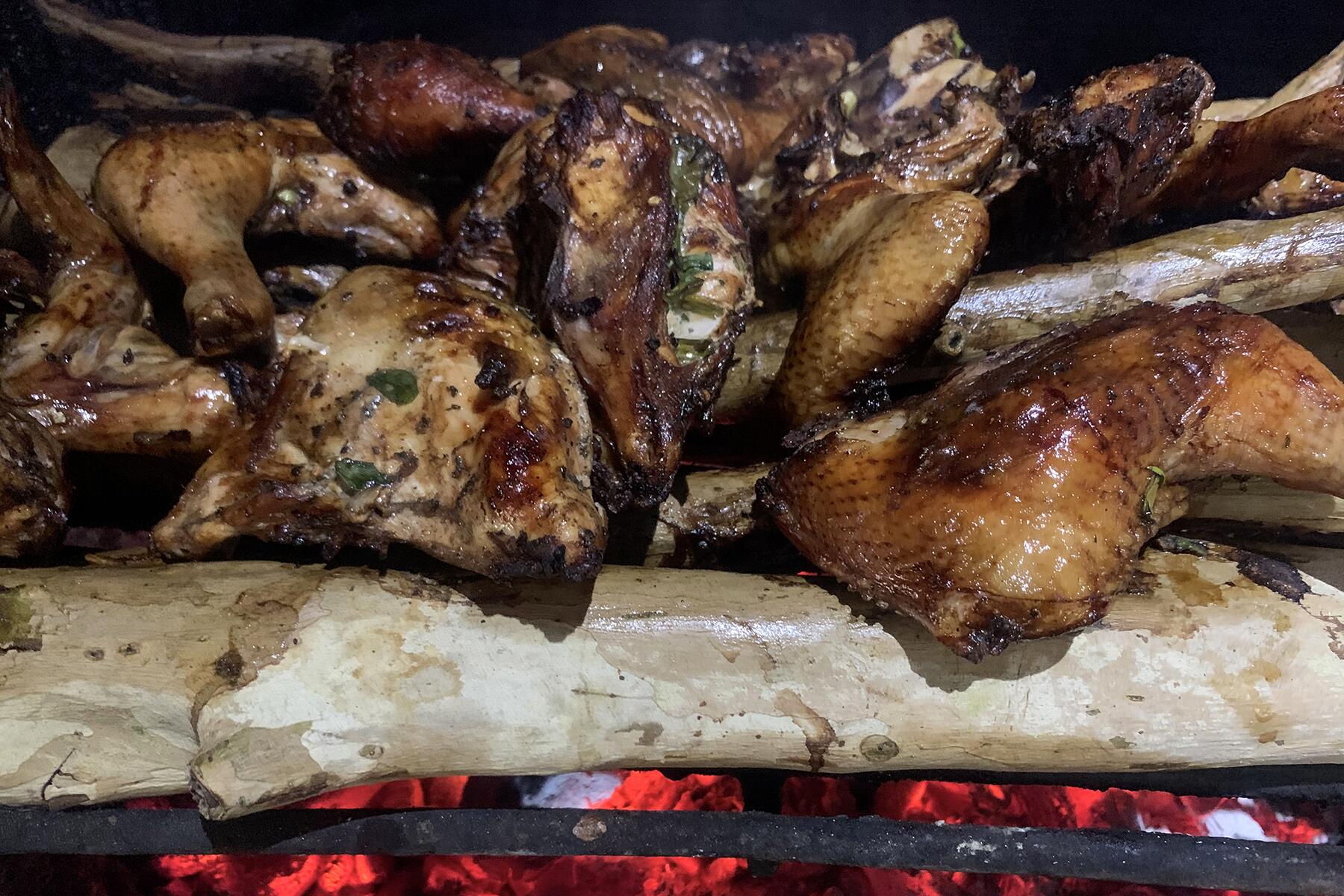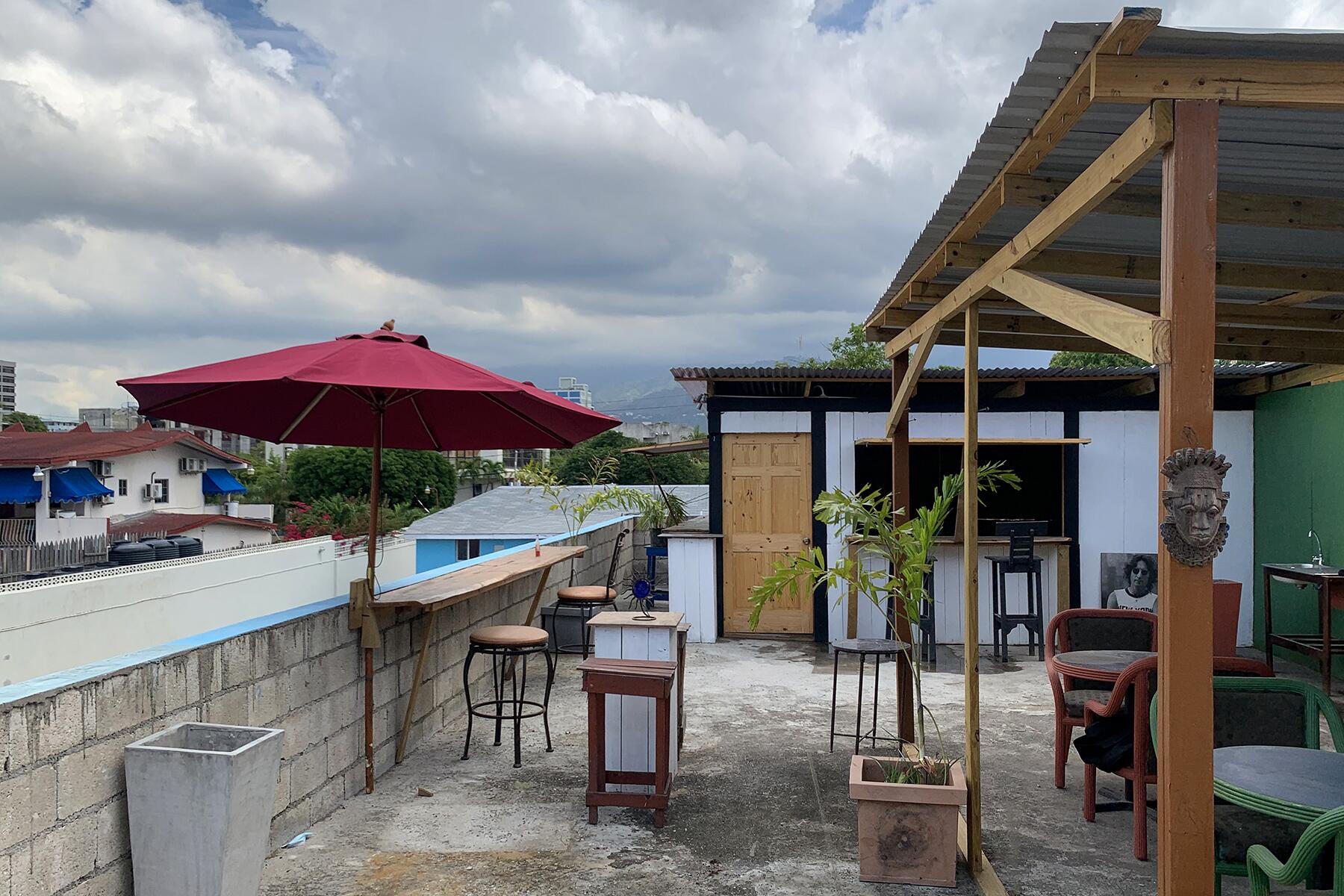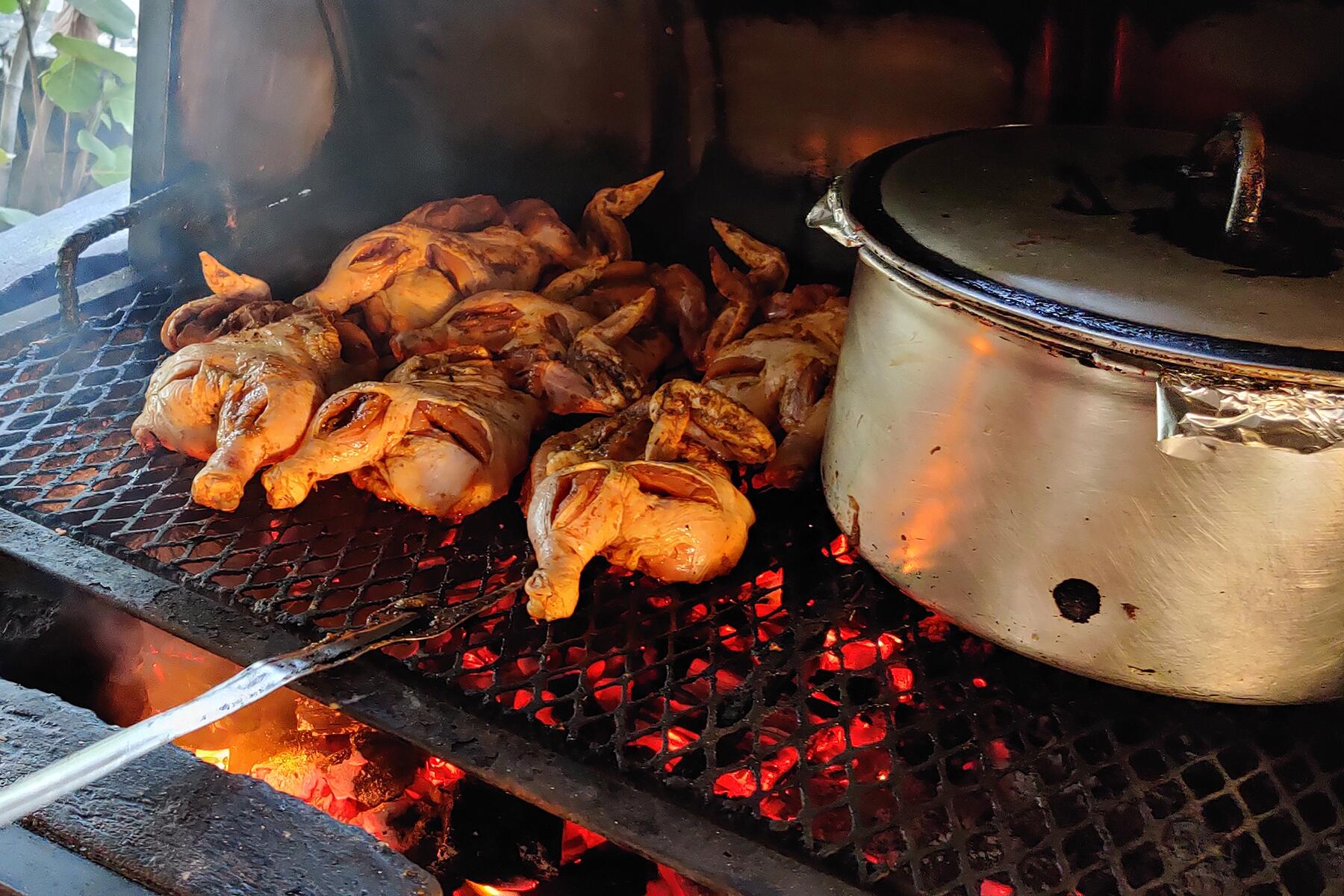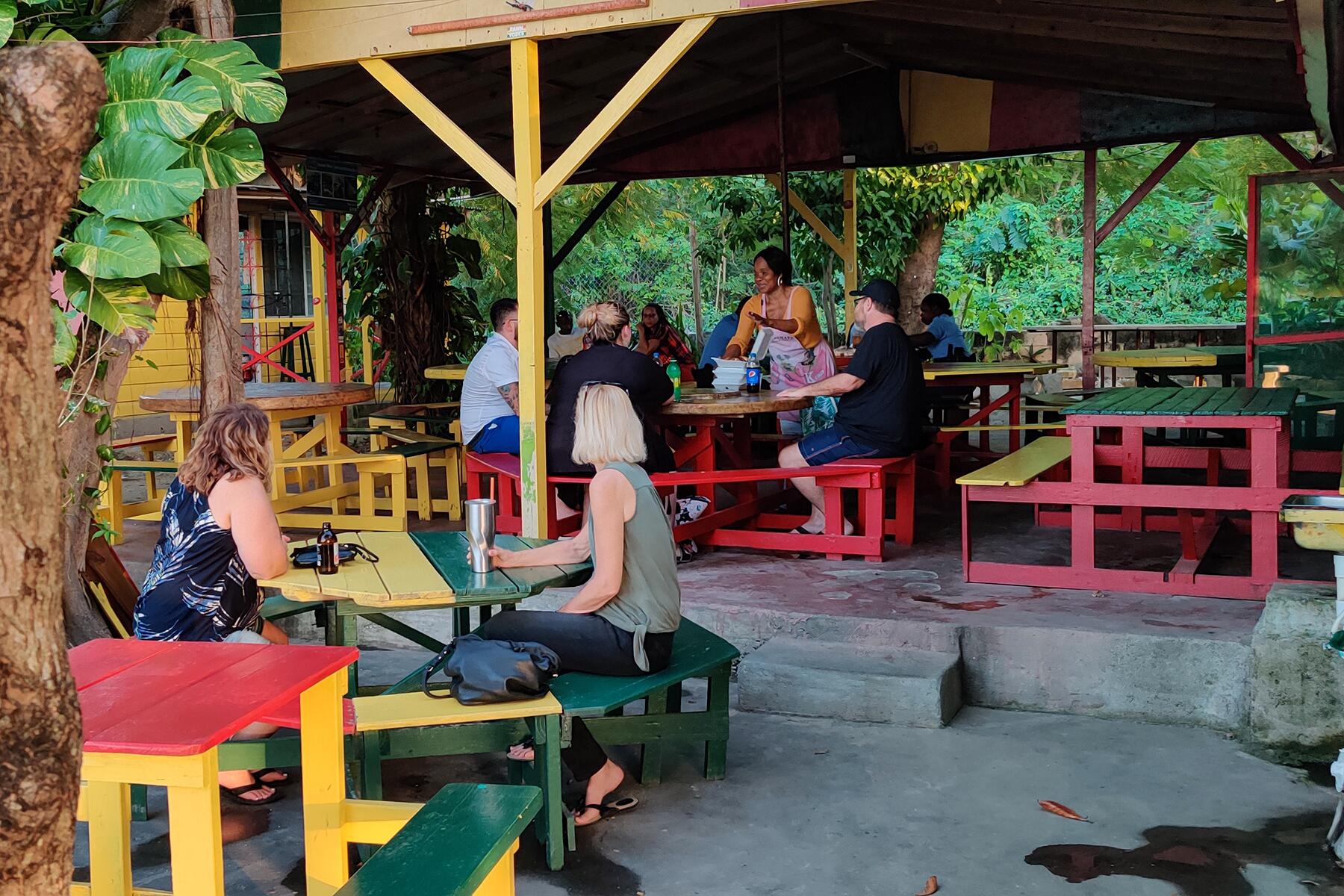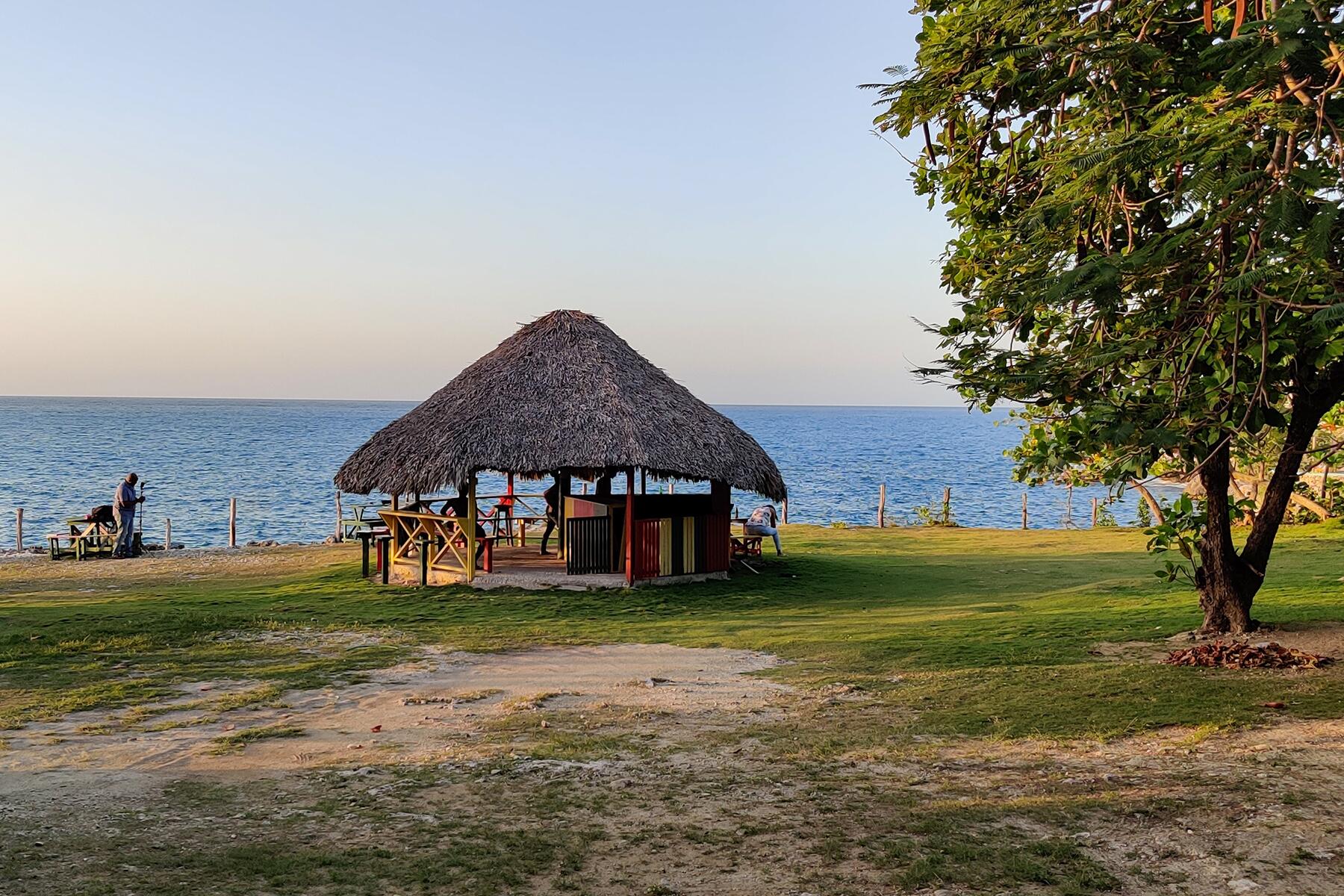Jerk stands are a staple in Jamaica–but did you know their meaty morsels have a history caught up in slavery and survival?
It’s easy to visit a new country (or return to one you love) without giving a second thought to how its gastronomy came to be. Delve beneath the deliciousness, though, and you’ll often discover some truly intriguing tales.
A dish that definitely falls into this category is one synonymous with Caribbean cuisine. Piquant and peppery, the flavor–and, indeed, the scent–of jerk is unmistakable. A must-try for meat-eaters, you’ll find it on many island menus, although its roots undeniably lie in Jamaica.
A nation that was both scorched and birthed from colonialism and slavery, 21st century Jamaica is largely associated with sun-soaked beach breaks and laid-back vibes. It’s also a country with a strong sense of identity–and this definitely extends to its culinary delights.
You’ve likely spotted bottles of jerk sauce in your local supermarket before. Nevertheless, pouring a little spice over a barbecuing chicken is a poor substitute for the real thing, found sizzling away in steel pans in sunny Jamaica.
In its purest (and tastiest) form, jerk represents a union of two major influences in Jamaica’s long—and often tragic—road to freedom.
Recommended Fodor’s Video
The Early Days of ‘Jerking’
The first thing to get into your head is that jerk is far more than just a flavor. It also encompasses a whole cooking technique (known as “jerking”) which has become ingrained into the very culture of the country.
“The history of jerk preparation is taught in our schools,” explains Lloydie, who runs the 3 Dives Jerk Centre in Negril. “It is very important; it has been a tradition long before Columbus ‘discovered’ Jamaica.”
3 Dives is one of many venues that prepare jerk dishes in the traditional way. To get an idea of what this entails, it is indeed necessary to travel back several centuries. To a time before Christopher Columbus set eyes on Jamaica’s verdant shores–and long before the island became peppered with slave plantations.
“The history of jerk preparation is taught in our schools. It is very important; it has been a tradition long before Columbus ‘discovered’ Jamaica.”
Prior to Jamaica’s colonialization, the small island was home to the indigenous Taino (also known as the Arawak). While they’re understood to originate from the Amazon Basin or the Andes, depending on which scholar you speak to, many Taino had migrated to the Caribbean by the end of the 15th century. Tragically, within 30 years, their numbers were drastically diminished due to things like disease and enslavement by the recently arrived Spanish.
What was left of Jamaica’s native population fled to what we now call the Blue Mountains (famous for its coffee) and it’s this small group that we have to thank for the bare bones of jerk cooking. The Taino are believed to have had a long tradition of rubbing meat in salt, slow cooking it over an open fire, or drying it out in the sun. This all helped to preserve it, a necessity somewhere as hot and humid as the Caribbean.
While the basic form of jerking likely pre-dates the Taino’s move into Jamaica’s mountainous interiors, the very act of this migration is what set the wheels in motion for its eventual evolution into the world-famous Jamaican jerk of today.
When it comes to the smoky aroma and succulent falls-straight-off-the-bone texture of jerk, you’ll find those elements were added later during a chapter of Jamaica’s history, which arguably had the biggest impact on its culture.
A Fact of Survival
Slave plantations existed across Jamaica from the early 16th century until 1834, by which time the island had long been under British rule. Sugarcane was the crop of choice, with over 800 of the island’s 3,000-plus plantations exclusively cultivating it by the end of the 1700s. Many of these vast estates still stand today.
Stories of people who escaped from plantations were not uncommon, with many fleeing to the Blue Mountains in the east or Cockpit Country in the west. Both sat at the heart of Jamaica’s plantations and featured difficult terrain.
It’s within these regions that people who escaped slavery encountered the Taino peoples and adopted many of their customs–including hunting wild boar and jerking its meat for sustenance. This eclectic community eventually became known as Jamaican Maroons. Many of their descendants still live there today in places like Accompong and Moore Town; historic Maroon settlements were considered safe havens during the colonial era.
In terms of jerk, the Maroons are believed to have brought both the woodsmoke element and the addition of a spicy marinade to the table. These are the two major things that distinguish the delicacy from your average grilled meat.
As Lloydie explains: “Brushing a jar of jerk seasoning on grilled chicken doesn’t make it jerk. You will have a sample of the flavor. Smoked using pimento wood is the only way to lock in the true jerk taste.”
Pimento trees grow across Jamaica and the wood is still what most jerk stands choose to cook their dishes over. As well as its ready availability, the smoldering embers produce very little smoke. Not just adding an inimitable taste to the meat, the smokeless fires allegedly helped runaway slaves avoid detection from search parties of plantation owners and their overseers.
The Jamaican Maroons additionally cultivated whatever spices could be found in the undergrowth to give the meat flavor, with Scotch bonnet peppers and pimento berries (allspice) being the most popular options. It’s these ingredients that lend jerk the intense heat it’s well-known for today.
Tasting History
More than 400 years after it came into being–and almost 60 years since the country gained independence–the tradition of jerking still thrives in Jamaica. Passed down from generation to generation, remarkably little has changed about the process. Smoke pits have been swapped for portable steel drum pans, while fiery marinades come pre-picked and pre-packaged for those who want to take a small taste of Jamaica home.
A plethora of jerk centers can also be found on roadsides and in sleepy towns across Jamaica, with many owners adopting the jerking methods of their ancestors.
“Jerk products are very popular and accepted by almost every stratum of society which is why you can find drum pan [mostly chicken] vendors almost anywhere in Jamaica,” says Patra.
She’s the chef behind Kingston’s Chateau 7 Gourmet Jerk Centre, one of a handful of jerk venues that have expanded their product offering beyond the mainstays of jerk chicken and pork. Her specialty dish is jerked conch–the fleshy insides of giant shells found off Jamaica’s shores. Other options you might come across during your travels include jerk rabbit, jerk fish, and even jerk jackfruit for those who prefer a plant-based diet.
Regardless of the “meat,” every dish features the same fiery taste and mouth-watering texture developed hundreds of years ago in pits dug clandestinely in the island’s jungle interiors.
And while the most authentic jerk is undoubtedly found in Jamaica, it’s no longer a dish exclusive to the country. Jerking is common in the nearby Cayman Islands (once a dependency of Jamaica), plus you’ll find places serving it anywhere Jamaicans have settled abroad.
A dish built on survival and the strive for freedom, jerk is ultimately a reminder of how far a nation can come in the face of adversity.



